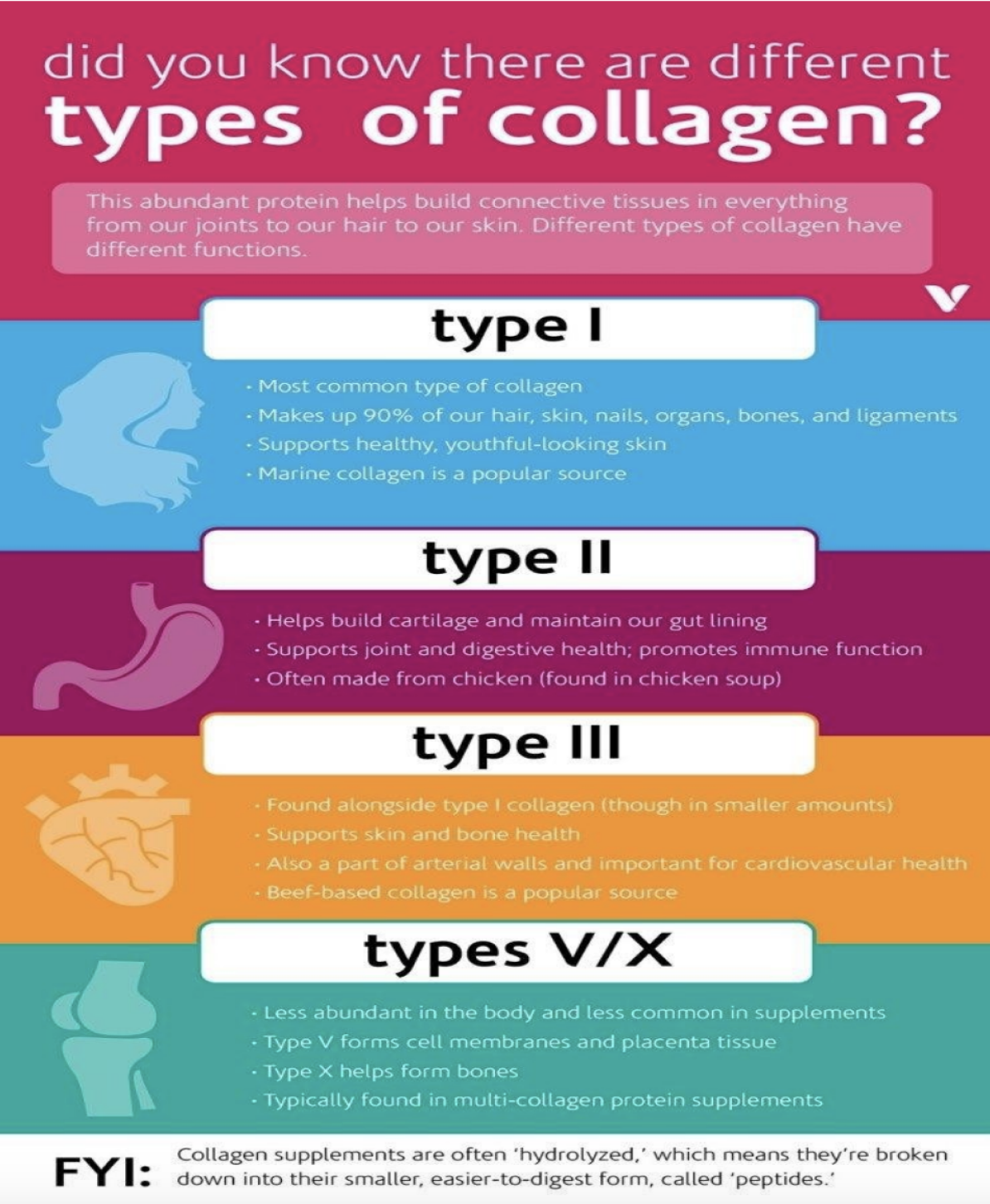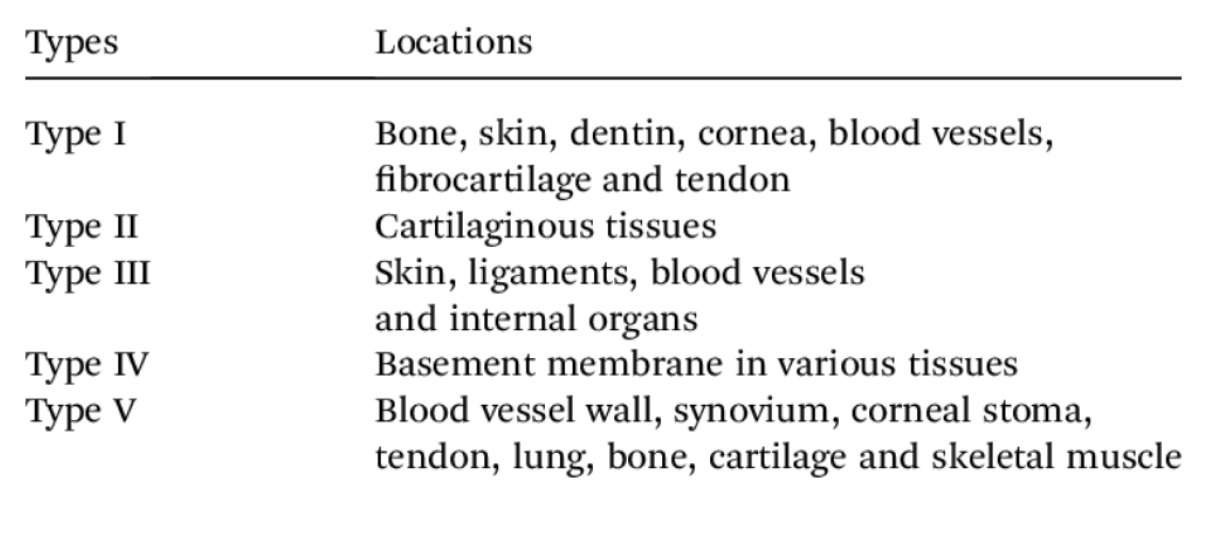TYPES OF COLLAGENS
Collagen occurs in many places throughout the body. Over 90% of the collagen in the human body, however, is type I. So far, 28 types of collagens have been identified and described. They can be divided into several groups according to the structure they form:
Fibrillar (Type I, II, III, V, XI) Nonfibrillar
- FACIT (Fibril Associated Collagens with Interrupted Triple Helices) (Type IX, XII, XIV, XIX, XXI)
- Short chain (Type VIII, X)
- Basement membrane (Type IV)
- Multiplexin (Multiple Triple Helix domains with Interruptions) (Type XV, XVIII)
- MACIT (Membrane Associated Collagens with Interrupted Triple Helices) (Type XIII, XVII)
- Other (Type VI, VII)
The five most common types are:
- Type I: skin, tendon, vasculature, organs, bone (main component of the organic part of bone) -
- Type II: cartilage (main collagenous component of cartilage)
- Type III: reticulate (main component of reticular fibers), commonly found alongside type I
- Type IV: forms basal lamina, the epithelium-secreted layer of the basement membrane
- Type V: cell surfaces, hair, and placenta
Diagram of Collagen Types:


Type I Collagen
If collagen’s skin-related benefits are your top priority, type I collagen is your go-to, as it makes up 90 percent of your hair, skin, and nails (organs, bones, and ligaments, too), according to Ryan Neinstein, M.D., plastic surgeon at NYC Surgical Associates. Type I collagen can help ward off the hallmarks of skin aging, like the stretching out or thinning of the skin.
“Collagen has been shown in preclinical studies to improve skin thickness, function, moisture content, and appearance,” says Neinstein, who credits type I collagen—particularly marine-sourced type I collagen—with these beauty benefits. “Collagen peptides from fish are considered superior in raising overall body collagen [which is predominantly type I] and improving skin, hair, nail, and bone quality,” he says. How? Research suggests marine collagen is up to one-and-a-half times more bioavailable than chicken or bovine collagen. (That’s why it’s the type of collagen most often used in topical cosmetic products.) Want to give it a try? We love Vital Proteins’ Wild-Caught Marine Collagen.
Type II Collagen
Chicken soup is good for the soul, but there’s another reason it’s so great when we’re sick: Type II collagen, which is mainly sourced from chickens and plentiful in chicken broth, is known for its immune-boosting and joint-supporting properties. “Type II collagen is by far the most important,” believes Josh Axe, D.N.M., C.N.S.,D.C., founder of DrAxe.com. This type of collagen is a major part of our gut lining and helps it act as a barrier between the substances we consume and our bloodstream, which helps our digestive system run smoothly and benefits our immune system, Axe says. It’s also a major building block of cartilage, which is why it’s so crucial for joint health. Two of our go-to’s are Neo Cell Collagen Joint Complex and Sports Research Bone Broth Protein.
Type III Collagen
Type III collagen helps form arterial walls, which is key for cardiovascular health. It’s often found alongside type I collagen in the body (think bone, cartilage, dentin, tendons, skin, and other connective tissues)— though in smaller amounts—and thus offers similar skin- and bone-related benefits. Type III collagen supplements are often made from bovine (cow) sources. Try adding Vital Proteins Beef Gelatin to soups or hot beverages.
Type V And X Collagen
Though the first three types of collagens are the most abundant in the body and the most found in supplements, some of the lesser-seen types—notably types V and X—are also important for key body functions. Type V collagen helps form cell membranes and the tissue in women’s placentas, while type X plays a crucial role in bone formation. Type V collagen is usually sourced from the membranes of eggshells, type X is made from chicken and bovine sources.

 Back
Back